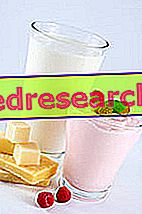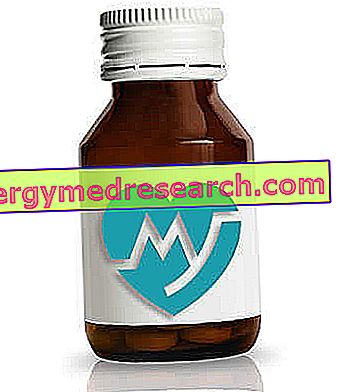When we suffer a fracture our bones react to the trauma: they synthesize new cells, receive more blood and slowly repair themselves. Thanks to this process, most fractures heal within six weeks. Some bones, however, are poorly vascularized and require longer recovery times (for example a fracture of the neck of the femur or tibia).
To facilitate this healing process, in addition to immobilization and possible surgical interventions, it is very important to follow an appropriate diet.
Diet and fractures
See also: Diet and osteoporosis
The healing time from a fracture is influenced by the actual availability of all those nutrients needed to repair the injured bone.

Other vegetables, such as spinach and beetroot significantly reduce the intestinal absorption of this precious mineral; therefore, they should be limited in diets for recovery from osee fractures.
- ALCOHOL, SODIUM AND CAFFEINE: reduce calcium absorption and facilitate its elimination; therefore, during recovery from a fracture, their consumption should be reduced.
- VITAMIN D: facilitates intestinal calcium absorption. It is produced by the skin thanks to the action of sunlight. Calciferol deficiencies are rare and are found mainly in the elderly during the winter months. To increase the levels of this vitamin in the diet it is important to consume the right amounts of eggs, salmon, butter and milk.
- PHOSPHORUS: fundamental for bone and dental mineralization. Cases of deficiency rarely occur, given that this mineral is found in most foods of animal and vegetable origin.
- VITAMIN A: plays an important role in protein synthesis and bone and skeleton formation; it is also a powerful natural antioxidant. It is found mainly in foods of animal origin such as meat, offal, some fish, eggs, milk, cheese, butter and, in the form of precursors (carotenoids) in yellow and red fruit and vegetables.
- VITAMIN C: it is very important for the synthesis of collagen, a fibrous protein necessary for the repair of fractures (collagen forms the connective tissue necessary for the constitution not only of bones but also of tendons, teeth, ligaments and cartilages). Like vitamin A, vitamin C is also found in fruits and vegetables (especially citrus fruits, kiwi, broccoli, strawberries, tomatoes and peppers). Instead it is absent in foods of animal origin (except for some offal).
- VITAMIN K: intervenes in the synthesis of some essential proteins for bone metabolism. Numerous recent studies give this vitamin an important role in the prevention of osteoporosis. However, vitamin K deficiency is very rare, both because it is widely distributed in foods and because the organism is able to regulate synthesis and elimination very well.
- VITAMIN B12: together with folic acid, copper and iron, the production of red blood cells in the bone marrow increases; it is therefore essential in the early stages of recovery after a fracture reduction surgery.
- ZINC: facilitates wound healing and reduces healing time. Food sources: eggs, lettuce, beans, spinach (contraindicated because they are rich in oxalate), peas, molluscs, brewer's yeast, barley, oats and peanuts.
- COPPER: contributes, along with vitamin C, to the formation of collagen.
What to eat
- To facilitate bone repair following a fracture it is therefore important to adopt a diet rich in fruit and vegetables.
The only exception is for foods rich in oxalates (cocoa, red beets, spinach, parsley, peanuts, rhubarb and tea) that should be consumed in moderation.
- It is also important to take calcium-rich foods such as dairy products, preferring those with reduced lipid content (partially or partially skimmed milk and yogurt, ricotta, mozzarella, carthusian, robiola, crescenza and milk flakes).
- Finally it is important not to exceed with tea, coffee, spirits and table salt (bearing in mind that many packaged foods such as salted snacks contain important quantities).




